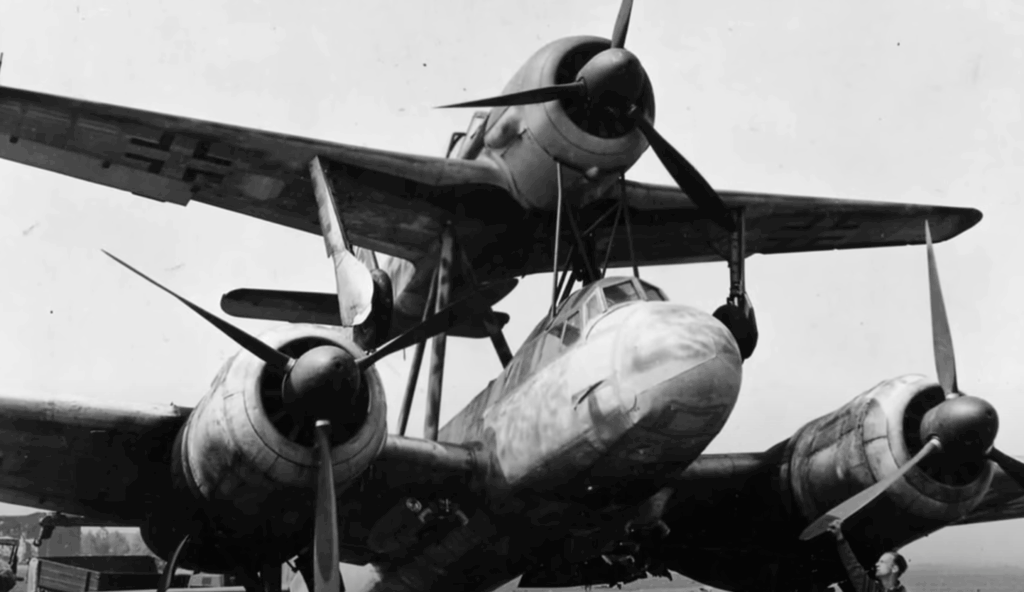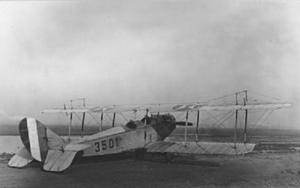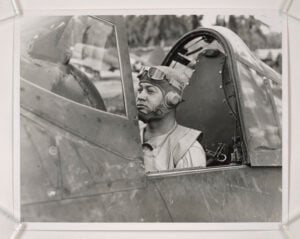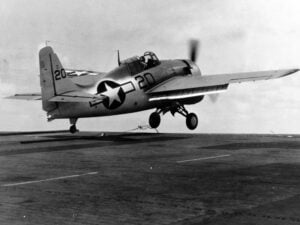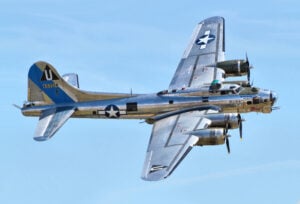The Weird Story of the WWII Plane Attached to a Plane
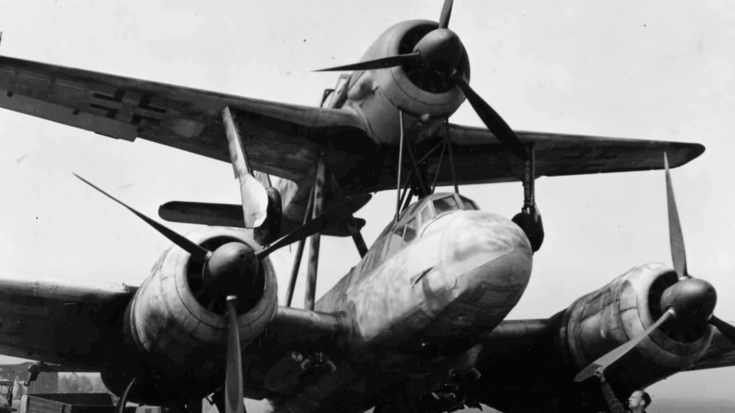
Panzer Archeology / YouTube
During the later years of World War II, German engineers developed one of the most unusual weapons of the air war: a system of two planes physically connected, flying together as one. The upper aircraft was a fighter with a pilot onboard, and the lower was a bomber stripped of its crew and packed with explosives. This flying pair was officially called the Beethoven Gerät, but pilots often used names like “Father and Son” or “Piggyback.”
This strange project was known as Mistel, and it was designed at the Junkers factory in 1941. The idea came from work on a new aiming device. Originally, the tool was meant to help bomber crews lock onto a target without needing to keep constant watch. But aviation engineer Siegfried Holzbauer had a different thought—what if the system was used to guide a flying bomb instead? That way, no crew would be put at risk in the bomber itself.
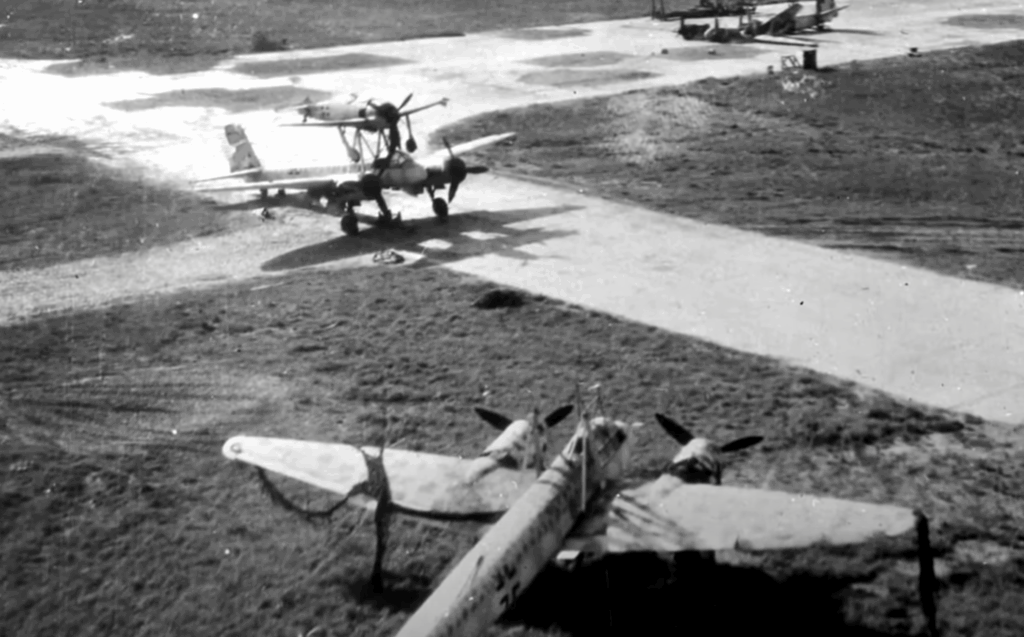
Creating a Flying Bomb Pair
The idea quickly developed into a two-aircraft combination: a fighter on top, controlling a bomber underneath that would become a flying bomb. The lower aircraft was loaded with a large explosive charge and had no crew or landing gear. The pilot in the top aircraft would guide the pair near the target and then release the lower plane, which would crash into its target under automatic control.
At first, the German Air Ministry had little interest in the design. But after looking at the cost and potential damage it could cause, approval was granted later in 1941. The first prototype was created in 1942 by combining a basic training aircraft with a glider. Engineers tested how such an unusual setup would handle takeoffs, flight, and landings. Because the sports plane used early on was too weak, it needed help from a transport aircraft just to get off the ground.
After some tests, the designers tried replacing the weak plane with a Focke-Wulf FW 56, which had a better engine. Even then, it still needed help to take off. Another attempt with a Messerschmitt Bf 109 allowed the setup to fly without outside assistance, but the powerful fighter still couldn’t lift the heavy bomb glider alone. It was a constant balance between engine strength and explosive weight.
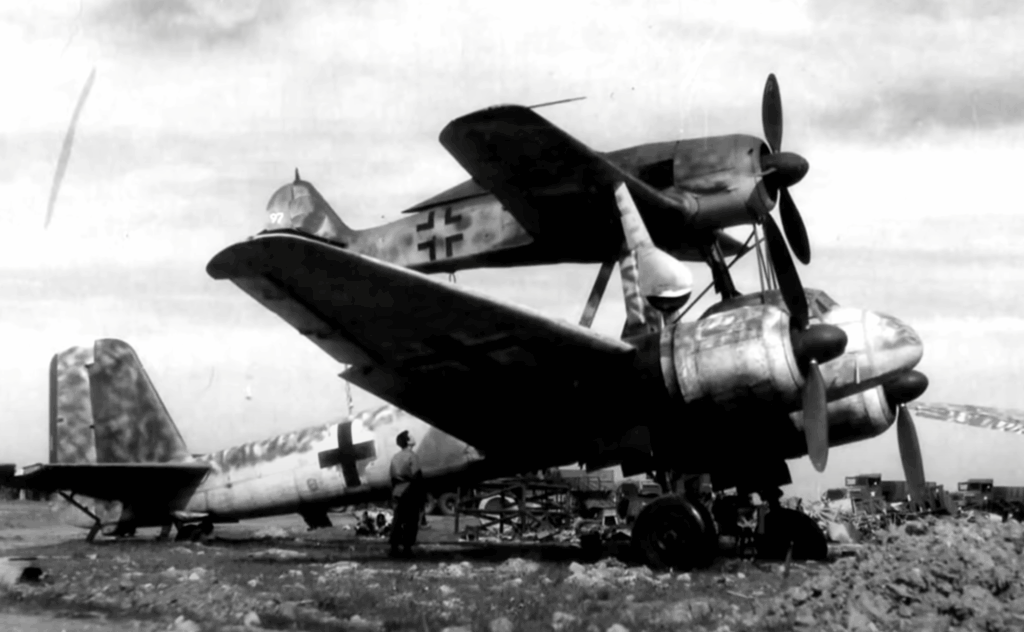
First Use in Battle
Eventually, the system was given to the 4th squadron of KG 101, led by Captain Horst Rudat. On June 24, 1944, the Mistel was sent to attack Allied ships near Normandy. But on the way to the target, a British fighter appeared. The German pilot was forced to release the bomber early and return to base to avoid being shot down.
A second attack, carried out overnight, was more successful. Four Mistel combinations managed to reach their target and hit Allied ships anchored near the shore. The next morning, six more were launched toward the port of Cherbourg. Only half made it to the target; the rest were intercepted or destroyed.
Despite the mixed results, the German command expanded the program. On October 10, 1944, KG 101 was reorganized and eventually became KG 200—a unit fully dedicated to these unique weapons. The program was kept secret, and its training base was moved far from combat zones to Norway.
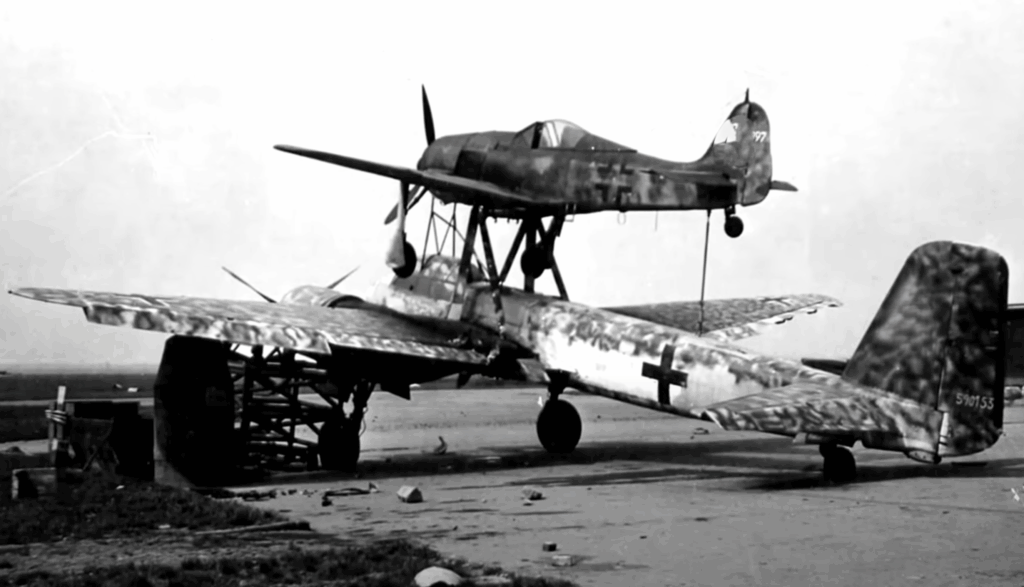
Plans That Never Took Off
In December 1944, the military prepared to relocate the entire Mistel unit to Denmark to launch a large attack on the British fleet at Scapa Flow. Sixty flying bombs were gathered for the mission. However, poor weather conditions prevented it from happening.
Mistel attacks usually involved several aircraft flying in groups. Sometimes they had fighter escorts, sometimes not. They flew at medium altitudes and got close to the target before the attack began. The pilot in the fighter would aim using a special sight system, then activate a shared targeting mechanism. The bomber’s automatic controls took over, using gyroscopes to stay on course. The fighter would then dive to guide the bomber toward its target before disconnecting and returning to base or escorting other aircraft.
